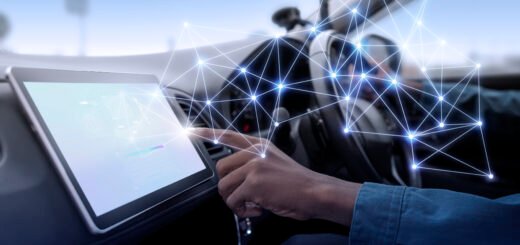Revolutionising the Future:Power of Integrated Device Technology

Integrated Device Technology (IDT) is revolutionising sectors and changing our daily experience with technology. From automotive systems to telecoms, IDT promises improved sustainability, performance, and efficiency. But precisely what is IDT, and why is it seen as a technological game-changer? Deeply investigating the field of Integrated Device Technology, this article investigates its basic elements, uses, advantages, and future possibilities.
What is Integrated Device Technology?
Integrated device technology is a collection of sophisticated circuits, electronic components, and systems meant to fit perfectly inside a more general electronic or digital environment. Applied in many sectors, IDT maximises processes, reduces power consumption, and lets innovation flow from one device or component combining several purposes.
To provide solutions in connectivity, efficiency, and performance, IDT aggregates specialist technologies like MEMS (Micro-Electra-Mechanical Systems), RF (Radio Frequency), and sophisticated power management systems.
A Quick Evolution of IDT
From its beginnings in micro-electronics, IDT has evolved over decades into a vital component of contemporary technology ecosystems. IDT today helps with developments in sectors such automotive innovation, IoT devices, and 5G infrastructure. The fast development of this technology emphasizes its importance in allowing innovations in many different fields.
Understanding the Technology Behind IDT
Several innovative technologies at the core of IDT allow its great performance and versatility. These cover:
MEMS (Micro-Electro-Mechanical Systems)
Sensors and actuators found in many technologies including IoT devices and automotive systems depend critically on MEMS technology. MEMS keeps power-efficient while also offering accuracy.
- RF (Radio Frequency) Technology
RF components are essential in telecommunications and wireless networks. IDT uses RF technology for signal modulation, improving transmission efficiency in devices like smartphones and 5G infrastructure.
- Power Management Solutions
Advanced power management systems in IDT ensure optimized energy usage, enhancing the performance and longevity of devices. They are critical in applications like electric vehicle systems and renewable energy platforms.
Applications of IDT in Various Industries
Integrated Device Technology has found applications spanning a wide array of industries, driving both incremental and revolutionary changes. Below are some of the most impactful use cases:
Telecommunications
5G networks bring about a great deal of improvement in signal processing and connection, which depends on IDT. In telecommunication systems, high-performance RF components from IDT provide flawless communication, low latency, and best energy economy.
Case Study: Leading 5G providers have combined IDT components to improve the signal strength and energy efficiency of their networks, therefore ensuring global connectivity’s dependability and environmental friendliness.
Automotive Industry
Particularly in electric cars (EVs) and autonomous driving, IDT technologies greatly support sophisticated automotive systems. High-efficient power management systems maximize charging infrastructure and extend the lifetime of car batteries.
Case Study: One automobile giant utilized IDT power management solutions to boost the efficiency of EV battery charging stations, reducing charging times and improving convenience for users.
Consumer Electronics
Integrated Device Technology is the source of the flawless connectivity and energy economy found in smart home appliances, wearable technology, and IoT gadgets. Within these devices, MEMS and RF components allow sustainable performance and accuracy.
Example: Popular smartwatch brand maximizes user experience and functionality by means of IDT RF technology, therefore optimizing connectivity with other connected devices.
Renewable Energy and Sustainability
IDT contributes massively to green technology by incorporating advanced power management systems in renewable energy solutions, such as solar panels and smart grids.
Case Study: A renewable energy provider integrated IDT’s power systems into their solar energy infrastructure, leading to efficiency gains of nearly 20%, enhancing sustainability efforts.
Advantages of IDT Over Traditional Technologies
Integrated Device Technology has several compelling advantages over traditional systems, making it an increasingly preferred choice across industries.
- Improved Efficiency: Whether in data processing or energy usage, IDT minimizes waste and maximizes productivity.
- Enhanced Performance: IDT delivers superior speed, precision, and reliability compared to older technologies.
- Compact Designs: By integrating multiple functions into a single device, IDT reduces hardware footprints, creating space-efficient solutions.
- Adaptability: Its adaptable technology meets particular needs like telecommunications or green energy and lets customizing across sectors.
Sustainability:The focus of IDT on energy efficiency fits with world sustainability targets, therefore lessening the environmental impact of technology.
Challenges of Adopting IDT
Although the benefits exceed the difficulties, obstacles to IDT’s more general acceptance still exist including:
High Initial Costs: Advanced component and system integration calls for a large initial outlay.
Complex Implementation: Combining several technologies calls both knowledge and a well defined implementation plan.
- Rapid Technological Evolution:The quick speed at which technology is developing calls for businesses to stay up with regular upgrades and ideas.
The Future of Integrated Device Technology
IDT’s future is at the nexus of sustainability and invention. Here’s what we expect of the next years:
Advancements in AI-Driven IDT Solutions: Combining artificial intelligence with IDT will result in even more intelligent gadgets able of deep learning and predictive analytics.
- Expansion in Healthcare Technologies: Medical imaging tools and wearable health monitoring systems can be improved by IDT’s MEMS technology.
- Widespread Adoption in Smart Cities:IDT will be the basis for next-generation infrastructure in smart cities, therefore optimizing everything including energy distribution and traffic control.
- Stronger Focus on Green Technology:With IDT improving renewable energy systems and advocating environmentally responsible behavior, sustainability will remain a motivating factor.
Real-World Impact of IDT
Considering its implementations, IDT has already made significant inroads into shaping our lives:
- Telecommunications Industry: Enhanced 5G connectivity has been made possible through IDT-based signal modulations.
- Electric Vehicle Revolution: Charging infrastructures are faster and more efficient, thanks to IDT’s power systems.
- Smarter Homes: IoT devices for home automation now offer improved functionality and lower energy consumption.
Industry leaders agree, IDT remains at the heart of rapid technological transformations. Doug Fisher, a well-known tech innovator, aptly summarizes this impact, saying, “Integrated Device Technology bridges the gap between imagination and innovation, delivering real-world benefits.”
How IDT Shapes the Future of Innovation
Integrated device technology is a driving factor behind efficiency and innovation rather than only a part of contemporary electronics. Growing impact of IDT in sectors such telecoms, automotive, and renewable energy underlines its importance and need in creating a technologically sophisticated future.
IDT helps turn abstract technology ideas into real-world solutions whether that means accelerating internet speeds, pushing renewable energy, or updating IoT devices.
Conclusion
Unquestionably, integrated device technology (IDT) is transforming the way businesses create and apply technology. Unquestionably a necessary instrument for promoting sustainability, efficiency, and creativity, it finds applications in fields including telecommunications, automobiles, consumer electronics, and renewable energy.
Adopting IDT is now a need for businesses trying to remain competitive in a tech-driven environment rather than a luxury. Its ability to revolutionize sectors guarantees its presence as a present and future driver in technological development.
Here lies the upcoming wave of technical development. Are you ready to use Integrated Device Technology’s possibilities for your businesses? Don’t wait; find out how IDT might alter your approach to efficiency and creativity.


